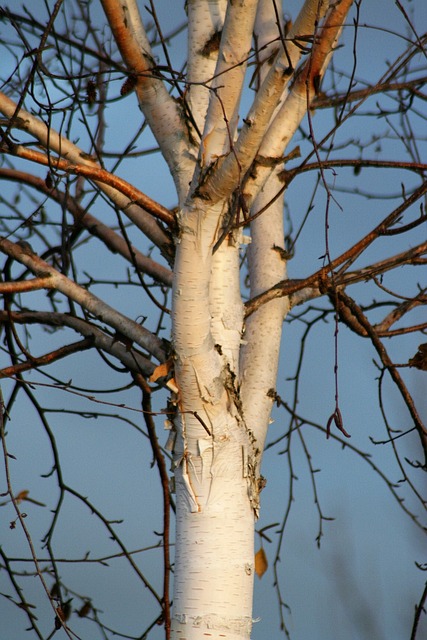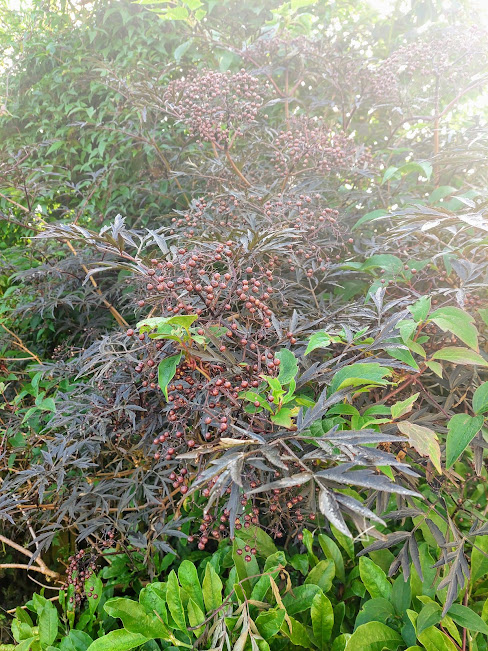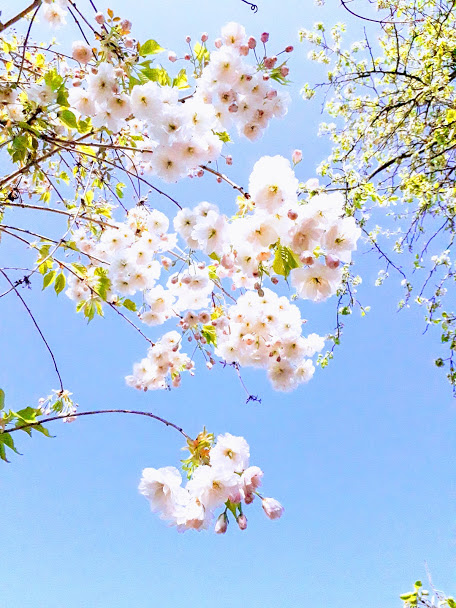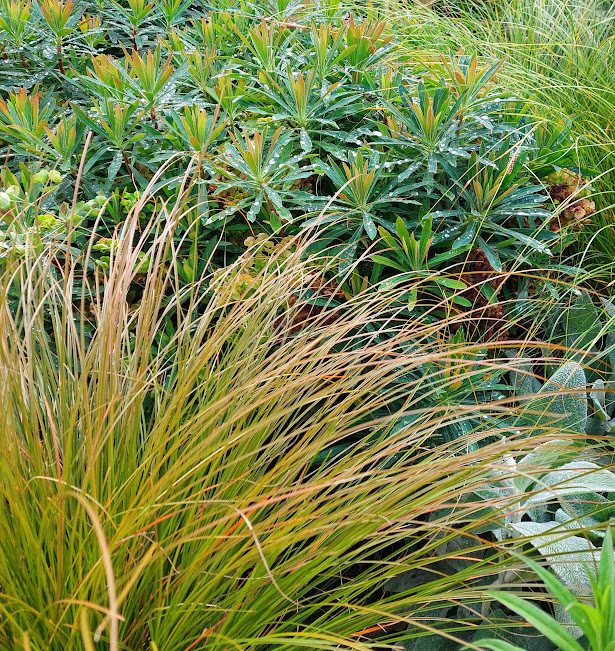This garden design project in Co Galway was all about creating an elevated patio that was level with the kitchen floor.
In this article we cover:
- The design brief
- Creating levels for the garden
- What to plant and where
- How to deal with a big garden: top tips
- Garden design drawings
The owners of this modern home in the peaceful countryside had one stipulation for their garden patio. It needed to be at the same level as their kitchen floor. They wanted to be able to step out through the sliding doors straight into the garden, with no steps down.
This meant raising up the patio to make it level with the finished interior floor level, then figuring out where best to place the steps down to the rest of the garden.
Early does it
Thinking about landscaping can be challenging when you’re engrossed in the interior details of the house build, but it’s well worth considering as early as possible – especially if you have arranged with your builder to complete some of the paving and hard landscaping.
[adrotate banner="58"]It would be a shame to invest in paving an elevated outdoor area and have the steps in an inconvenient spot. For this garden design, we realised the best solution was to include three sets of steps.
If placed just outside the kitchen, the patio could be easily reached but shaded out by the house as the sun moves around to the west in the late afternoon and evening. To make the most of the last rays of sunshine, a smaller paved area was placed just beyond the patio with room for a bench seat.
A set of wide steps descends from the rear side of the patio to link both seating areas. A second set is located to the right of the kitchen doors, for easy access to the path behind the house, and beyond that, to the garage. A third set links the patio with the lawn to the west.
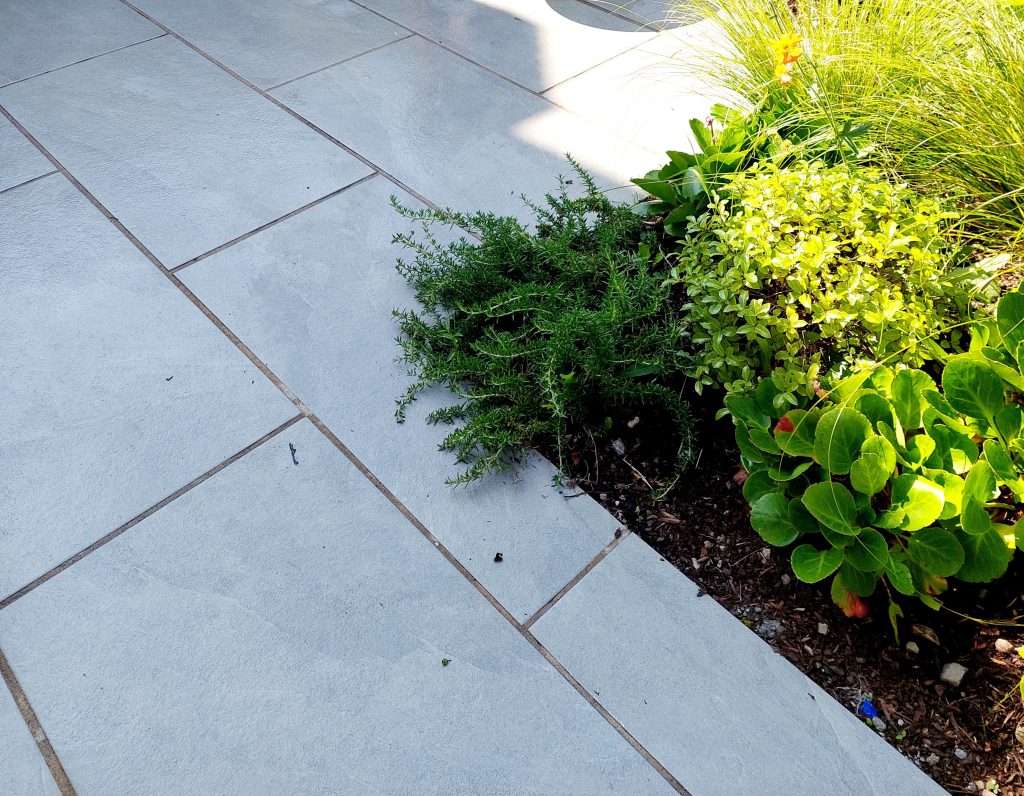
Tree planting
I always consider existing trees when assessing a site with a new home. In many cases the site won’t have any mature trees in situ, so the earlier these can be planted the better, given that the best time to plant a tree is always twenty years ago.
It’s easy to assume that trees visible outside the site will form part of the ‘borrowed landscape’, and indeed they do, but you can’t always count on them being there – they could be removed for any number of reasons so introducing trees early to your own site means you’ll miss that part of the borrowed landscape less in the event of it changing down the line.
In this case the only trees visible from the garden at the time of building were ash trees, prized for their sturdy timber which has traditionally been used in the crafting of hurls – especially important to this county.
Although the ash is a lovely tree, the ash dieback disease has become far more widespread over the past decade and it is likely to kill off most of the existing ash trees in the country over the next two decades.
Research is underway to gather seeds from ash trees that show natural tolerance to the pathogen, but it will be many years before the newer generations of ash trees make a significant impact on the Irish landscape.
For this large garden, a blend of tree species was included in the design, so that there would be interesting leaf colour and shape, attractive bark and blossom or berries at different seasons.
Although the trees are planted in groups of one species, different groups will have different eventual sizes and shapes, helping to keep things interesting. By varying the tree choice and including some relatively fast growing species such as our native silver birch, many of the trees will reach a decent size within the next five to ten years.
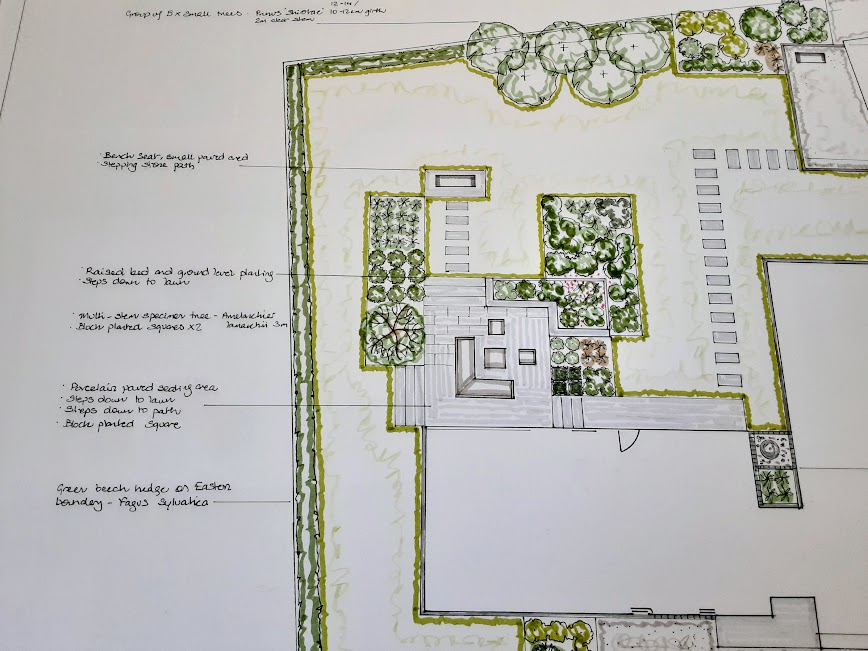
Groups of trees are placed strategically around the garden to the front and rear of the house, helping to enhance the architecture and make the house sit comfortably in its rural surroundings.
Border planting was also part of the solution, a blend of easy maintenance shrubs and perennials with evergreen grasses for shape and movement. The grasses are included just outside the long picture window in front of the water feature, so that it’s surrounded by lush green all year round.
Find out more about ash trees on teagasc.ie
Big Garden Tips
Flow path. When considering the location of outdoor steps, think about how you might want to move around the garden space and which areas need to be easily and quickly reached on a frequent basis.
Go big. In a large garden, be generous with trees and plant in groups of at least three (for larger trees) and five or seven for smaller species.
The big picture. Remember that trees and large shrubs beyond your boundary, which may form an important part of your garden view, could be removed in the future, so make provisions in your own garden plans by planting your own trees early.

